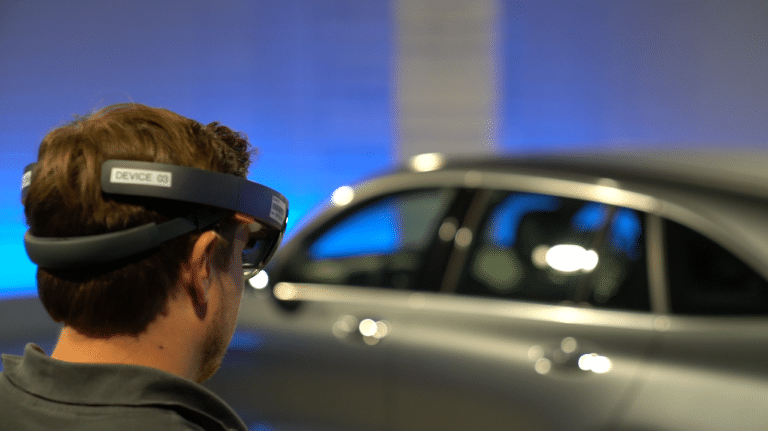
Though we spend ample time examining consumer-based AR endpoints, greater near-term impact is seen in the enterprise. This takes many forms including brands that use AR to promote products in greater dimensions and industrial enterprises that streamline operations.
These industrial endpoints include visual support in areas like assembly and maintenance. The idea is that AR’s line-of-sight orientation can guide front-line workers. Compared to the “mental mapping” they must do with 2D instructions, visual support makes them more effective.
This effectiveness results from AR-guided speed, accuracy, and safety. These micro efficiencies add up to worthwhile bottom-line impact when deployed at scale. Macro benefits include lessening job strain and closing the “skills gap,” which can preserve institutional knowledge.
But how is this materializing today and who’s realizing enterprise AR benefits? Our research arm ARtillery Intelligence tackled these questions in its report: Enterprise AR: Best Practices & Case Studies, Vol 2. We’ve excerpted it below, featuring BMW’s AR deployment.
Driving Innovation
One area where AR increasingly shines is product design. By prototyping digitally, speed and cost efficiencies can be gained versus physical prototypes. Just as we’ve examined this concept in the aerospace industry, this principle has found ample value in the automotive sector.
For example, BMW Group uses AR to optimize vehicle concept and prototype engineering. It does this by overlaying 3D models onto physical automobiles using AR glasses. This lets it visualize various designs to get a better sense of the finished product through a tighter feedback loop.
BMW does this by accessing digital elements from its cloud data management system through Microsoft HoloLens. Engineers then overlay digital components and manipulate positioning through HoloLens’ standard hand gestures – a much faster process than traditional methods.
By rapidly prototyping various design elements or concept variants, it can develop ideas faster and more effectively, including a high degree of collaboration among design professionals. Not only can this streamline design, but ensure that assembly processes align with new designs.
“The AR goggles and CAD data allow us to find out much [faster] whether the production worker will be able to fit the component properly later on,” BMW Head of Complete Vehicle, Michael Schneider told AR Rocks. “That way, we need far fewer test setups.”
Time to Market
Beyond high-level benefits and glowing statements about AR’s productivity boosts, what were the quantifiable results for BMW? By incorporating AR in the above processes, the company has lessened the timeline for vehicle concept and prototype engineering by as much as 12 months.
This time savings ends up offering value on several levels. Not only can engineers get speedier results, but BMW can compress its traditional design cycle with faster time to market. That can give it a competitive edge in newer designs reaching the market. Not only that…time is money.
“It saves us time and money when we integrate new vehicles into production,” said BMW Head of Digitalization, Prototyping and Measurement Technologies, Christoph Leibetseder.






